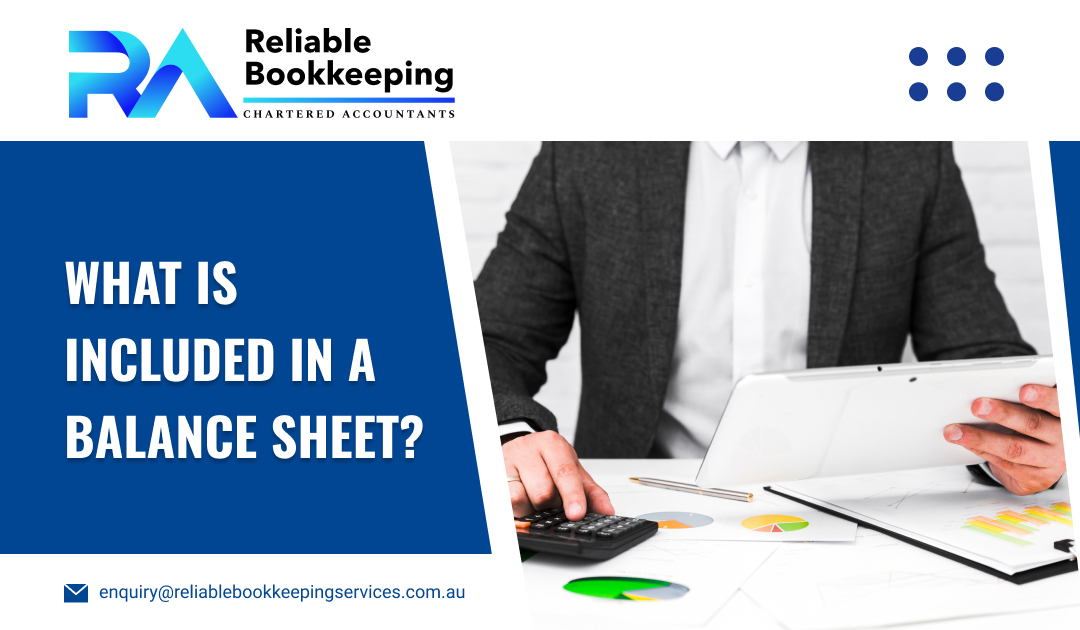Good financial health is crucial for running a business successfully, regardless of the business’s size. Balance sheets are one of the best methods to handle your existing finances during a specific period. You might be wondering what is on the balance sheet. In this blog, we’ll cover different aspects of the balance sheet so you understand this financial document, including the importance of creating a balance sheet. Let’s get started.
What is a Balance Sheet?
As the name implies, a balance sheet gives you an insight into a business’s financial status. The balance sheet is one of the three most crucial financial statements your bookkeeper creates. A balance sheet gives you a clear picture of where your business stands in terms of assets, equity, and liabilities. In simple words, a balance sheet gives you a final calculation of your net worth. This depends on how much cash flows in and out of a business. It provides you with a clear view of how balanced your business is in terms of financial situation. To make informed business decisions, it’s essential to prepare financial statements. If you don’t know how to prepare them, you can seek help from a small business bookkeeper.
What is in a Balance Sheet?
A balance sheet includes a company’s assets, shareholders’ equity, and liabilities at a specified time. It gives a clear view of what a company owes and owns, and the amount shareholders invest.
- Asset: Assets are any income or cash that comes into the business and assets that cannot be converted into money easily. Or those that cannot be used as cash. While that may sound complex, assets can be divided into three categories:
- Current assets: Current assets are temporary forms of income that your business will have for a short period of time. This could include cash in the stock, bank, short-term investments, owed money from debtors, and petty cash.
- Fixed assets: Fixed assets are those assets that will remain in your business. These assets are also known as capital assets or non-current assets and can include enhancements to buildings, the purchase of office equipment, and investments in equipment and vehicles. Fixed assets are typically intended to provide long-term benefits and contribute to business growth, while current assets focus on immediate spending.
- Intangible assets: In contrast to other assets, intangible assets cannot be physically touched or used like cash. Nevertheless, intangible assets still carry significant value when calculating your total assets. Examples include owned patents, trademarks, intellectual property, customer lists, and goodwill from a recent acquisition. Because intangible assets can be challenging to assess without expertise, it’s advisable to seek professional assistance when needed. After categorising all your assets, you can total them to determine the overall value of your fixed, current, and intangible assets.
- Liabilities: Liabilities show the money your company owes. That could be bills you must pay to suppliers, monthly rental costs, interest on loans, and salaries, and other business running costs. Liabilities are divided into short-term and current liabilities and long-term. It is essential to calculate everything accurately to ensure consistency. By relying on bookkeeping services, you can generate better financial statements.
- Short-term and current liabilities: These are debts that you must pay in a short time period. These liabilities may include short-term loans, overdrafts, and trade creditors. Current liabilities include wages, accounts payable, dividends, and interest.
- Long-term liabilities: Long-term liabilities don’t need full payment within a set year of balance sheet creation. That could be long-term loans, secured bills, leases, and director’s loans to the business.
- Owner’s equity: You can calculate your owner’s equity depending on the assets and liabilities figures. After this, the total assets are subtracted from the total liabilities to get the final number. Be sure to calculate everything accurately because your small business accountant in Melbourne will track and document the financial transactions to use when preparing and filing taxes for your company.
Conclusion
As a business owner, it is essential to understand the importance of financial statements, such as income statements, cash flow statements, and balance sheets. You can choose reliable bookkeeping services so a bookkeeper can prepare them for you.

